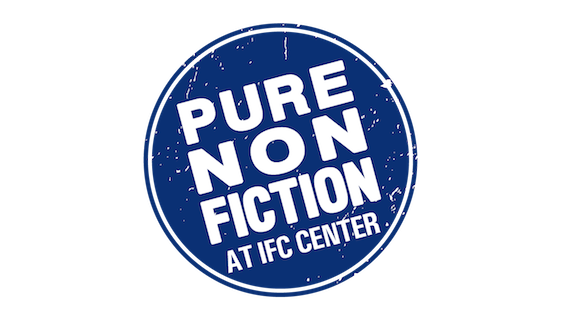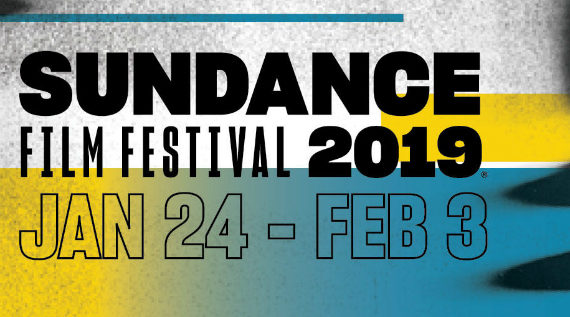
Tom Putnam and Brenna Sanchez won the audience award at Tribeca for their film BURN, about firefighters in Detroit.
As we mentioned in our Tribeca screening recap, Nisha Pahuja won the documentary jury prize this week at the Tribeca Film Festival for THE WORLD BEFORE HER, a simultaneous look at the Miss India beauty pageant and a camp for fundamentalist Hindu teenaged girls. The festival’s documentary audience award went to the film BURN by Tom Putnam and Brenna Sanchez, a portrait of firefighters in Detroit. Also, Stuart Nussbaumer at Filmmaker Magazine on Tuesday, April 24 provided an overview of some of the docs screening at the festival this year.
The tail end of Tribeca overlapped with the beginning of Canada’s most well-known documentary festival, Hot Docs, which kicked off Thursday, April 26. The festival’s programming team is posting dispatches from the front lines on their fieldnotes blog. The intrepid Basil Tsiokos of the What (Not) to Doc also managed to churn out two great overviews of the festival. You can find part one here, and part two here. Hot Docs this year also hosted a two-day interactive documentary workshop called Hot Hacks, which paired filmmakers with developers to create a web-based project in a short period of time. Hot Docs will also be hosting a Tweetup today, April 30 from 7 pm to 9 pm at the TIFF Lightbox in Toronto to meet with programmers and talk docs.
The National Endowment for the Arts’ broad cuts to PBS doc shows were made official on Wednesday, April 25. Among those hit hard by the cuts were Independent Lens, who saw their funding cut to $50,000, from $170,000 and POV, which received $100,000, down from $250,000. NEA Media Arts Director Alyce Myatt told the New York Times that the NEA hoped to encourage the development of games to address new media consumption and an evolving public media landscape. In response to the news, the International Documentary Association (IDA) scheduled a Doc U titled, “The Future of Docs on PBS” to take place in LA on May 10. At Current.org, Dru Sefton had an in-depth breakdown of just who was getting hammered by the cuts, which affected those in the public media landscape far beyond the doc world. And Anthony Kaufman of Indiewire explored how the possible ramifications the NEA’s new media focus might have on traditional documentary filmmakers.
Similar cuts happening north of the border, in Canada, also have traditional filmmaking institutions, such as the National Film Board of Canada (NFB) taking a harder look at new media and new distribution models, according to the Globe and Mail.
POV was active on the web this week with a couple of helpful posts and events. On Wednesday, April 25 the show hosted a Twitter “docchat” with series producer Yance Ford on how to get your film on public television. The series followed that up with a great post sharing six golden rules for filmmakers using social media, penned by Sean Holmquest.
The New York Times, too, was particularly active on the doc front this week. On April 27, the Grey Lady published a piece by Mike Rubin that took a look at the documentation of Detroit that seems to have seized the collective consciousness. The paper the same day published a piece by Tom Roston on documentary filmmaking duos, among them Ashley Sabin and David Redmon.
Times film writer Manohla Dargis also that day published a story about director Shirley Clarke, a radical filmmaker whose works, which include both narrative and documentary films, are to be rereleased by Milestone Films over the next few years. And finally, Paul Simon wrote about the risks and potential rewards of film investment, citing producer Marc Simon, who most recently worked on the film UNRAVELED.
The folks running the IDA’s blog were kind enough to share recaps of two recent Doc U events, one that investigated whether doc films were art, and another examining the mechanics of trailers. It’s almost as good as being in LA.
This week in the Great White North, Canada’s POV Magazine released its latest issue with Lisanne Pajot and James Swirsky, the filmmakers behind INDIE GAME: THE MOVIE, given the coveted cover story slot.
Indiewire recapped the preview (of sorts) that filmmaker Laura Poitras gave to an audience at the Whitney of her third installment in a trilogy of films examining the cost of terrorism and the U.S.’s response to it. Most of the evening consisted of a dialogue between hacker/activist Jacob Appelbaum and NSA whistleblower William Binney. The pair provided a chilling account of the potential power the NSA has to monitor the communications and activities of U.S. citizens in their own country.
The DocumentaryTech blog took a look at the much-derided Final Cut Pro X a full year after its initial release. If anything, the post makes clear that the debate over the changes to Final Cut are ongoing, and show no signs of abating in the near future.
This week, Amos Vogel, the founder of the Cinema 16 film society passed away at the age of 91. Vogel was a key early proponent of experimental films, and eventually became a distributor of them, as well as a founder of the New York Film Festival. Christopher Campbell of the Documentary Channel Blog also posted an encomium for Vogel.
Andrew Parker of Dorkshelf on Monday, April 23 published an interview with one-half of the Ross Brothers filmmaking duo, Turner Ross, about their latest project, TCHOPITOULAS.
The Chicago Reader also put in some face time with doc filmmaker Robert Greene, speaking with him on his wrestling film FAKE IT SO REAL.
HBO stirred up the political pot a bit this week with news that in June it would air a documentary on former President George H.W. Bush titled 41. Evidently the first Bush president has never written a memoir, and will be opening up the first time on subjects such as his time with the CIA.
Christopher Campbell of the Documentary Channel blog is reliable as ever with his list of this week’s theatrical releases.
As always, please send any tips or recommendations you have for the Memo .(JavaScript must be enabled to view this email address). Thanks, and have a great week!





